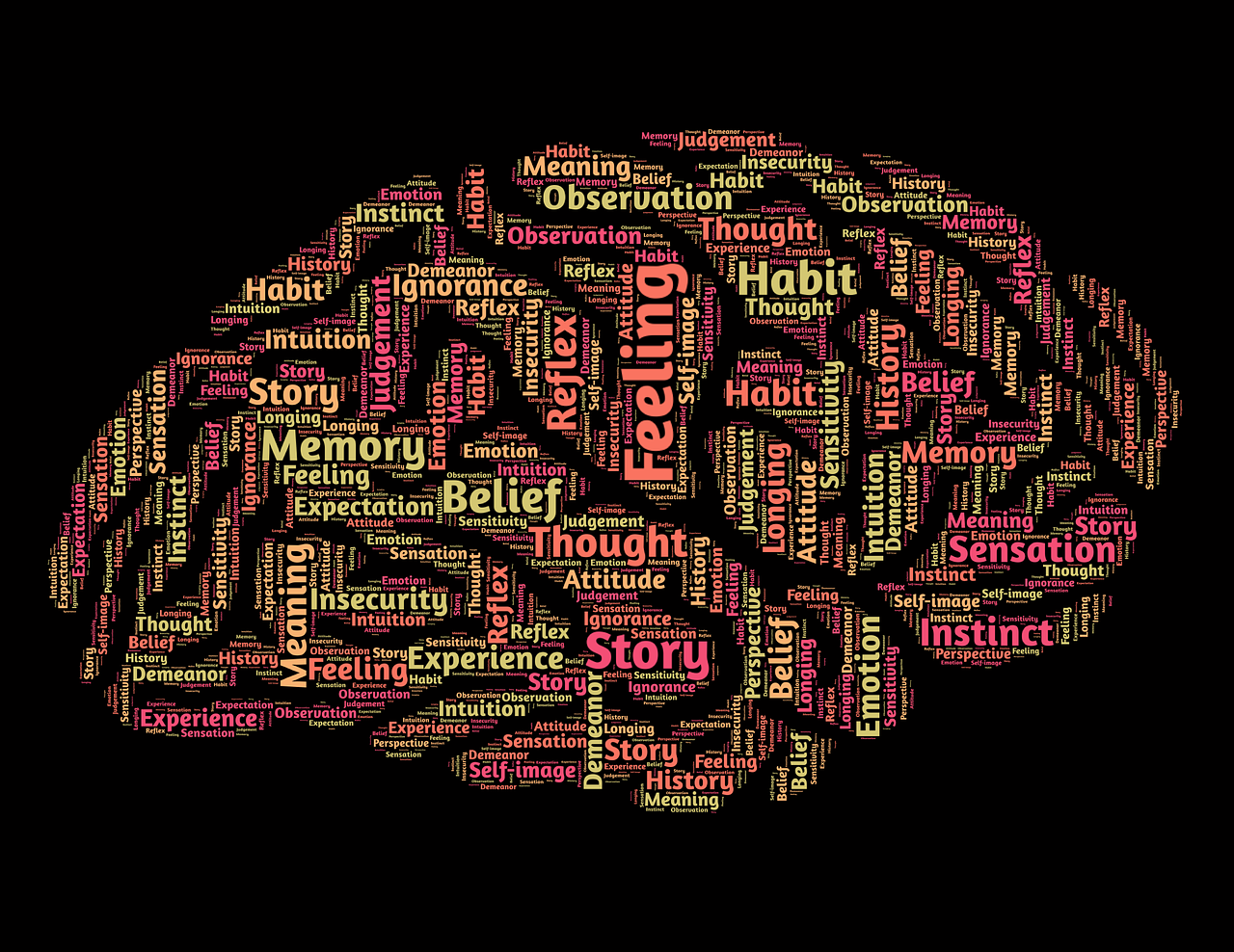Empower Your Chatbot with Custom Knowledge Base and ChatGPT

Empowering Chatbots
Empowering your chatbot with a custom knowledge base is a game-changer for enhancing its conversational abilities. By integrating ChatGPT, an advanced AI language model, you can elevate your chatbot's performance to new heights. This powerful combination enables your chatbot to access a tailored AI knowledge base, serving as an information repository that significantly enhances its ability to understand and respond to user queries effectively.
AI Knowledge Base: Integrating a custom knowledge base with ChatGPT empowers your chatbot with a wealth of information, enabling it to provide more accurate and relevant responses to user inquiries.
Incorporating this approach not only improves the quality of interactions but also enhances the overall user experience. The synergy between a custom knowledge base and ChatGPT equips your chatbot with the tools it needs to engage in meaningful and contextually relevant conversations.
Understanding ChatGPT
ChatGPT Functionality
newoaks AI, powered by ChatGPT, offers an array of functionalities that significantly enhance chatbot interactions. By leveraging ChatGPT, chatbots can engage in more natural and contextually relevant conversations with users. This advanced AI language model plays a pivotal role in improving conversational AI by enabling chatbots to understand and respond to user queries more effectively.
Enhanced Interactions: ChatGPT's functionality empowers chatbots to provide more accurate and personalized responses, thereby elevating the overall user experience.
ChatGPT Implementation
Integrating ChatGPT into chatbot systems brings forth a multitude of benefits for chatbot development. By leveraging ChatGPT, developers can enhance the performance of their chatbots, ensuring that they are equipped with the necessary tools to engage users effectively. The seamless integration of ChatGPT enables chatbots to understand user queries better and provide more coherent and relevant responses.
Improved Performance: The integration of ChatGPT enhances the overall performance of chatbots, resulting in more effective and engaging interactions.
Enhanced Understanding: Leveraging ChatGPT improves the chatbot's ability to comprehend user queries accurately, leading to more meaningful conversations.
Custom Knowledge Bases
Creating a Custom Knowledge Base
Developing a custom knowledge base tailored to the specific needs of your chatbot is crucial for optimizing its performance. This personalized repository of information serves as the backbone for empowering your chatbot with in-depth knowledge and expertise.
Strategies for developing a custom knowledge base for chatbots include:
Content Curation: Carefully curate and organize relevant information that aligns with the objectives and scope of your chatbot. This may involve gathering data from reputable sources, industry-specific databases, or internal knowledge repositories.
Natural Language Understanding: Ensure that the content within the knowledge base is structured in a way that aligns with natural language patterns. This facilitates seamless integration with ChatGPT and enhances the chatbot's ability to comprehend user queries effectively.
Continuous Refinement: Regularly update and refine the knowledge base to ensure that it remains current and aligned with evolving trends, industry standards, and user preferences.
By implementing these strategies, you can create a robust custom knowledge base that forms the foundation for enriching your chatbot's conversational capabilities.
Knowledge Base Integration
Integrating a custom knowledge base with ChatGPT amplifies your chatbot's capabilities, resulting in an enriched user experience. The impact of this integration extends beyond providing factual responses; it encompasses understanding context, delivering personalized interactions, and adapting to diverse user queries seamlessly.
Enhanced User Experience: The integration of a custom knowledge base equips your chatbot to deliver more insightful and contextually relevant responses, thereby enhancing user satisfaction and engagement.
By integrating these two powerful components – a custom knowledge base and ChatGPT – you equip your chatbot with an extensive reservoir of information while leveraging advanced AI language models to engage users in meaningful conversations effectively.
NLP Techniques
Natural Language Processing Fundamentals
When delving into the realm of natural language processing (NLP) for chatbot development, it's essential to grasp the fundamental principles that underpin this transformative technology. NLP revolves around equipping machines with the ability to comprehend and interpret human language, thereby enabling chatbots to understand user queries and formulate contextually relevant responses.
Understanding User Intent: NLP techniques enable chatbots to discern the underlying intent behind user queries, allowing for more accurate and personalized interactions.
Language Understanding Techniques: NLP encompasses a range of language understanding techniques, including semantic analysis, entity recognition, and sentiment analysis. These techniques empower chatbots to extract meaning from user inputs and tailor responses accordingly.
The integration of NLP fundamentals into chatbot development lays the groundwork for enhanced conversational capabilities by facilitating a deeper understanding of user language patterns and intentions.
Advanced NLP Applications
As advancements in natural language processing continue to unfold, chatbot developers can leverage advanced NLP applications to further augment their conversational AI systems. These advanced applications go beyond basic language understanding and encompass sophisticated techniques that significantly elevate chatbot performance.
Contextual Understanding: Advanced NLP techniques enable chatbots to grasp contextual nuances within conversations, leading to more coherent and meaningful interactions with users.
Personalized Responses: By harnessing advanced NLP capabilities such as personalized content generation and dynamic response adaptation, chatbots can deliver tailored responses that cater to individual user preferences.
The impact of these advancements on the user experience is profound, as they contribute to more engaging, contextually aware, and empathetic interactions between chatbots and users. As developers continue to explore the frontiers of NLP innovation, the potential for enhancing chatbot conversational abilities remains boundless.
User Experience Design
Optimizing User Interaction
When it comes to user experience design (UX design) for chatbots, optimizing user interaction is paramount. Designing chatbot interactions in a way that enhances user experience and engagement is essential for fostering meaningful connections with users.
Intuitive Interface Design: Creating intuitive chatbot user interfaces plays a pivotal role in optimizing user interaction. By implementing clear navigation, minimalistic design elements, and interactive features, chatbots can offer a seamless and user-friendly experience.
Engagement Strategies: Incorporating engagement strategies such as personalized greetings, proactive assistance, and interactive prompts enhances the overall interaction between users and chatbots. These strategies contribute to a more engaging and dynamic conversational experience.
By focusing on optimizing user interaction through thoughtful UX design, chatbots can effectively cater to the needs and preferences of users while fostering a positive and engaging environment.
Personalization and User Feedback
Personalization is key to delivering exceptional user experiences in the realm of chatbot interactions. Tailoring interactions based on individual preferences, past interactions, and demographic information contributes to a more personalized and relevant experience for users.
Customized Responses: Personalization extends to providing customized responses that align with the specific needs or interests of users. This tailored approach fosters a deeper level of engagement and resonance with the audience.
User Feedback Integration: Incorporating user feedback mechanisms allows chatbots to continuously improve their interactions. By actively seeking and incorporating user feedback, chatbots can adapt to evolving preferences and refine their conversational abilities over time.
Emphasizing personalization and integrating user feedback into the design process ensures that chatbot interactions remain adaptive, relevant, and aligned with the diverse needs of users.
Training Data Selection
Data Collection and Curation
When embarking on chatbot development, the process of data collection and curation plays a pivotal role in shaping the chatbot's capabilities. Strategic approaches to gathering and organizing training data are essential for ensuring that the chatbot can effectively understand user queries and deliver contextually relevant responses.
Strategies for Data Collection: Implementing diverse strategies for data collection is crucial for enriching the chatbot's training dataset. This may involve sourcing data from reputable sources, user interactions, industry-specific repositories, and publicly available datasets. By diversifying the sources of training data, developers can ensure that the chatbot is equipped with a broad spectrum of information to draw upon when engaging with users.
Curation for Relevance: Curating training data involves organizing and filtering information to ensure its relevance to the chatbot's intended scope and objectives. This process may encompass removing redundant or outdated data, structuring information in a format conducive to machine learning algorithms, and verifying the accuracy of the collected data. The curation phase is instrumental in refining the quality of training data, thereby enhancing the chatbot's performance in understanding user queries.
The impact of high-quality training data on chatbot performance cannot be overstated. Well-curated datasets contribute to improved accuracy, precision, and contextual understanding within chatbot interactions. By prioritizing meticulous data collection and curation practices, developers lay a robust foundation for empowering their chatbots with comprehensive knowledge and language processing capabilities.
Ethical Considerations
In the realm of training data selection for chatbots, ethical considerations hold significant weight in ensuring responsible and inclusive AI development practices. The selection and utilization of training data must align with ethical guidelines to promote fairness, transparency, and inclusivity within chatbot interactions.
Ethical Data Usage: Adhering to ethical principles in training data selection involves safeguarding user privacy, obtaining consent for data usage where applicable, and upholding standards for responsible information handling. Developers must prioritize ethical considerations to mitigate potential risks associated with unauthorized or unethical use of personal or sensitive information within training datasets.
Ensuring Fairness and Inclusivity: The selection of training data should reflect diverse perspectives while avoiding biases that could lead to discriminatory outcomes within chatbot interactions. Striving for inclusivity entails considering a wide range of demographic factors, cultural nuances, and language variations to ensure that the chatbot's responses cater to diverse user demographics without reinforcing stereotypes or prejudices.
By integrating ethical considerations into the process of training data selection, developers uphold integrity in AI development while fostering an environment where users can engage with chatbots confidently and equitably.
Conversational AI Best Practices
Ethical and Inclusive AI
In the realm of conversational AI development, ethical and inclusive practices serve as foundational pillars for ensuring responsible and equitable interactions between chatbots and users. Addressing biases, promoting diversity, and upholding ethical standards are essential components of cultivating a trustworthy and inclusive conversational AI ecosystem.
Ethical Integrity: Upholding ethical integrity in conversational AI involves prioritizing user privacy, consent, and responsible data usage. By adhering to ethical principles, developers can instill confidence in users regarding the ethical handling of their information within chatbot interactions.
Diversity and Inclusivity: Embracing diversity and inclusivity within conversational AI development entails considering a wide spectrum of perspectives, cultural nuances, and language variations. This approach ensures that chatbot interactions cater to diverse user demographics without perpetuating biases or stereotypes.
The integration of ethical and inclusive AI practices establishes a framework where chatbots engage with users in a respectful, fair, and culturally sensitive manner.
Continuous Improvement Strategies
Implementing continuous improvement strategies is paramount for enhancing chatbot performance over time. By embracing iterative refinement processes and adapting to evolving user needs and preferences, developers can ensure that chatbots remain adaptive, relevant, and effective in delivering exceptional user experiences.
Iterative Feedback Loops: Establishing iterative feedback loops enables developers to gather insights from user interactions and incorporate valuable feedback into refining chatbot capabilities. This cyclical process fosters ongoing improvement based on real-time user input.
Adaptation to User Preferences: Chatbots should be designed to adapt to evolving user preferences by analyzing patterns in user behavior, language usage trends, and interaction dynamics. This proactive approach allows chatbots to tailor responses according to shifting user needs effectively.
By implementing continuous improvement strategies that prioritize user feedback integration and adaptive responsiveness, developers can elevate the performance of conversational AI systems while maintaining alignment with evolving user expectations.
Elevating Chatbot Capabilities
By leveraging custom knowledge bases and ChatGPT, chatbots can significantly enhance their conversational abilities. The integration of a tailored AI knowledge base serves as a valuable asset, providing chatbots with access to a wealth of information that enriches their understanding and responsiveness. Additionally, the implementation of NLP techniques further augments the chatbot's capacity to comprehend user queries and deliver contextually relevant responses.
User experience design best practices play a pivotal role in elevating chatbot performance by optimizing interactions and fostering personalized engagements. Designing intuitive interfaces and incorporating personalized responses contributes to a more engaging and dynamic conversational experience for users. Adhering to conversational AI best practices ensures that chatbot interactions are ethical, inclusive, and respectful of diverse user demographics.
Continuous Improvement: Embracing iterative refinement processes and adapting to evolving user needs through continuous improvement strategies enables chatbots to remain adaptive, relevant, and effective in delivering exceptional user experiences.
In summary, the synergy between custom knowledge bases, ChatGPT, NLP techniques, user experience design best practices, and adherence to conversational AI best practices collectively empowers chatbots with enhanced capabilities for meaningful and contextually relevant interactions.
See Also
Conversing with Your Data: A Complete Manual for Training ChatGPT with Personalized AI Chatbot
Improving Social Media Metrics Monitoring with Personalized ChatGPT and RTS Intercom Systems
Developing a Telegram Bot with ChatGPT: Personalized Responses and Telegram Links
Empowering Customer Service with AI Chatbots and Knowledge Base Incorporation
Free Live Chat for Website: HTML Code Integration and Personalized ChatGPT Configuration

